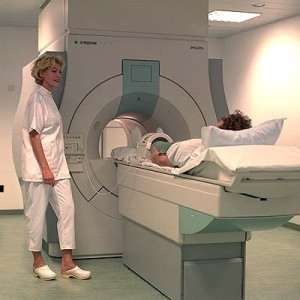by
Heather Mayer, DOTmed News Reporter | October 26, 2010
Images created using 7T MRI angiography are of significantly improved quality when compared with 3T MRA, according to a study published in the October issue of Radiology.
Researchers, led by Dr. Saskia G. C. van Elderen of the Leiden Medical Center in Leiden, the Netherlands, studied 3T and 7T MRAs of 10 healthy adult volunteers. To date, there are only about 40 7T MRI systems available for human use, and no studies have compared this high-field-strength of cardiac MRI with 3T MRI, according to the report.
The 3T and 7T scans were of the patients' right coronary artery (RCA).



Ad Statistics
Times Displayed: 136626
Times Visited: 7924 MIT labs, experts in Multi-Vendor component level repair of: MRI Coils, RF amplifiers, Gradient Amplifiers Contrast Media Injectors. System repairs, sub-assembly repairs, component level repairs, refurbish/calibrate. info@mitlabsusa.com/+1 (305) 470-8013
The scans measured contrast-to-noise (CNR) ratio between the blood pool and epicardial fat, signal-to-signal ratio of the blood pool, vessel sharpness and diameter of the first four centimeters, and visible vessel length.
The mean CNR between the blood pool and epicardial fat for 7T was 87.5 and 51.7 for 3T. RCA vessel sharpness was measured to be 58.3 percent with the 7T scanner and 49.7 percent with 3T, according to the report. There were no statistically significant differences observed between vessel length, vessel diameter, navigator efficiency or data acquisition.
While the researchers predicted a twofold increase, the SNR of the blood pool was measured to be 60 percent higher with 7T than with 3T. They reported that this smaller-than-expected increase could be a result of an inferior transmit-receive coil used in the 7T system. They said development in coil technology is needed to advance 7T MRI use.
The authors concluded that image quality from 7T MRI scans was equal to or greater than quality from 3T.
"Our results clearly warrant further evaluation in patients with coronary artery disease to assess the potential of our 7T approach for the visualization of luminal RCA disease," they wrote.

